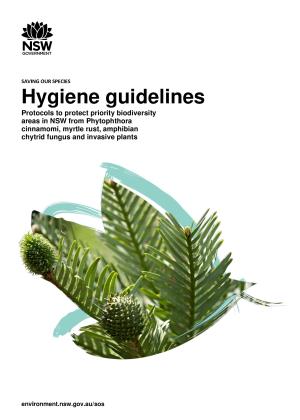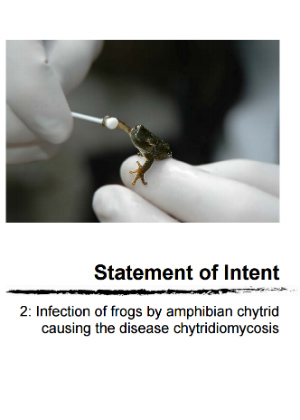
The fungus attacks the parts of a frog's skin that have keratin in them. Since frogs use their skin in respiration, this makes it difficult for the frog to breathe. The fungus also damages the nervous system, affecting the frog's behaviour.
A sick frog may:
- have discoloured skin
- be sloughing, or peeling, on the outside layers of its skin – this can vary from obvious peeling of skin (particularly on the feet) to a roughness of the frog's skin that you can barely see
- sit out in the open, not protecting itself by hiding
- be sluggish and have no appetite
- have its legs spread slightly away from itself, rather than keeping them tucked close to its body. In more extreme cases, the frog's body will be rigid and its back legs will trail behind it.
Chytrid fungus is probably transferred by direct contact between frogs and tadpoles or through exposure to infected water. The disease may not kill frogs immediately, and they can swim or hop to other areas before they die, spreading fungal spores to new ponds and streams. This means it is very important not to move frogs from one area to another.
Wet or muddy boots and tyres, fishing, camping, gardening or frog-survey equipment may also be contributing to the spread of the disease.
Help stop the spread of chytrid fungus
Please take the following precautions if you intend visiting frog habitats in the wild, including nature ponds in parks or gardens:
- Only touch frogs when absolutely necessary. Remember to use disposable gloves, sample bags and sterile equipment.
- Clean and dry all equipment and wet or muddy footwear before and between visiting frog sites. This may include cleaning the tyres of your vehicle before visiting known high-risk sites where threatened frog species may live.
- Never move a frog from one area to another.
- Carry cleaning utensils and a disinfectant for use between sites.
What to do if you find a sick frog
Some of the symptoms of chytrid fungal infections are described above. If you think you've found a sick frog, or if you see a frog which has died recently from no obvious cause (ie. not killed by a car), please:
- Place the frog into a container without directly touching it.
- If the frog is still alive, make sure the container is escape-proof and has a few small air holes and a small amount of water. Ring the Frogwatch Helpline on 0419 249 728 for an opinion on whether the frog is sick or whether it is likely to survive transportation. If the frog is dead, put the container into a plastic bag and into your freezer as soon as possible.
- Consult the Hygiene guidelines for instructions on how to send frozen or live frogs by courier to a laboratory and how to be reimbursed for your expenses.


 Stage 1: tadpoles only have keratin (shown in red) in their mouth area, so they can scrape algae and decaying vegetation from the bottom of a pond or stream. Chytrid fungus only affects their mouthparts.
Stage 1: tadpoles only have keratin (shown in red) in their mouth area, so they can scrape algae and decaying vegetation from the bottom of a pond or stream. Chytrid fungus only affects their mouthparts. Stages 2 and 3: as the tadpole develops legs, it grows keratin on its feet and hands, to make them tougher. Chytrid fungus in the water can infect these new areas of keratin.
Stages 2 and 3: as the tadpole develops legs, it grows keratin on its feet and hands, to make them tougher. Chytrid fungus in the water can infect these new areas of keratin. Stage 4: the tadpole develops into a froglet, and keratin grows on other parts of its body that need to be protected from wear and tear. Chytrid fungus can now spread to many parts of the frog's body.
Stage 4: the tadpole develops into a froglet, and keratin grows on other parts of its body that need to be protected from wear and tear. Chytrid fungus can now spread to many parts of the frog's body.
